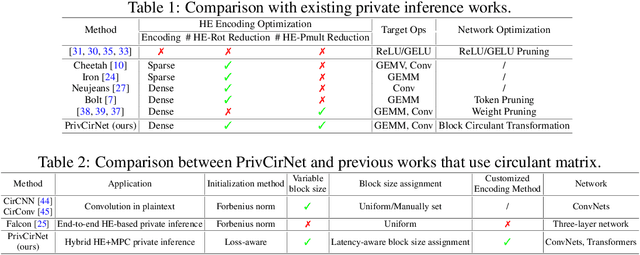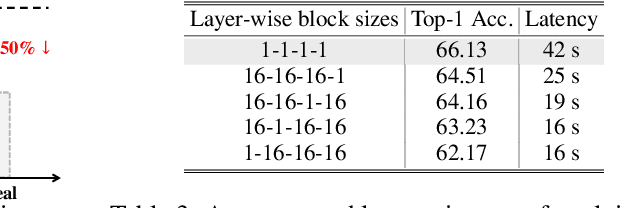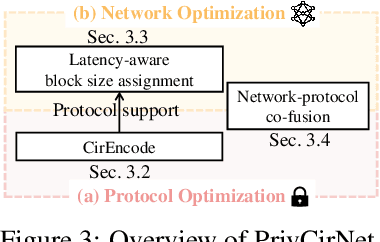Lemeng Wu
Steepest Descent Density Control for Compact 3D Gaussian Splatting
May 08, 2025Abstract:3D Gaussian Splatting (3DGS) has emerged as a powerful technique for real-time, high-resolution novel view synthesis. By representing scenes as a mixture of Gaussian primitives, 3DGS leverages GPU rasterization pipelines for efficient rendering and reconstruction. To optimize scene coverage and capture fine details, 3DGS employs a densification algorithm to generate additional points. However, this process often leads to redundant point clouds, resulting in excessive memory usage, slower performance, and substantial storage demands - posing significant challenges for deployment on resource-constrained devices. To address this limitation, we propose a theoretical framework that demystifies and improves density control in 3DGS. Our analysis reveals that splitting is crucial for escaping saddle points. Through an optimization-theoretic approach, we establish the necessary conditions for densification, determine the minimal number of offspring Gaussians, identify the optimal parameter update direction, and provide an analytical solution for normalizing off-spring opacity. Building on these insights, we introduce SteepGS, incorporating steepest density control, a principled strategy that minimizes loss while maintaining a compact point cloud. SteepGS achieves a ~50% reduction in Gaussian points without compromising rendering quality, significantly enhancing both efficiency and scalability.
EdgeTAM: On-Device Track Anything Model
Jan 13, 2025Abstract:On top of Segment Anything Model (SAM), SAM 2 further extends its capability from image to video inputs through a memory bank mechanism and obtains a remarkable performance compared with previous methods, making it a foundation model for video segmentation task. In this paper, we aim at making SAM 2 much more efficient so that it even runs on mobile devices while maintaining a comparable performance. Despite several works optimizing SAM for better efficiency, we find they are not sufficient for SAM 2 because they all focus on compressing the image encoder, while our benchmark shows that the newly introduced memory attention blocks are also the latency bottleneck. Given this observation, we propose EdgeTAM, which leverages a novel 2D Spatial Perceiver to reduce the computational cost. In particular, the proposed 2D Spatial Perceiver encodes the densely stored frame-level memories with a lightweight Transformer that contains a fixed set of learnable queries. Given that video segmentation is a dense prediction task, we find preserving the spatial structure of the memories is essential so that the queries are split into global-level and patch-level groups. We also propose a distillation pipeline that further improves the performance without inference overhead. As a result, EdgeTAM achieves 87.7, 70.0, 72.3, and 71.7 J&F on DAVIS 2017, MOSE, SA-V val, and SA-V test, while running at 16 FPS on iPhone 15 Pro Max.
Efficient Track Anything
Nov 28, 2024Abstract:Segment Anything Model 2 (SAM 2) has emerged as a powerful tool for video object segmentation and tracking anything. Key components of SAM 2 that drive the impressive video object segmentation performance include a large multistage image encoder for frame feature extraction and a memory mechanism that stores memory contexts from past frames to help current frame segmentation. The high computation complexity of multistage image encoder and memory module has limited its applications in real-world tasks, e.g., video object segmentation on mobile devices. To address this limitation, we propose EfficientTAMs, lightweight track anything models that produce high-quality results with low latency and model size. Our idea is based on revisiting the plain, nonhierarchical Vision Transformer (ViT) as an image encoder for video object segmentation, and introducing an efficient memory module, which reduces the complexity for both frame feature extraction and memory computation for current frame segmentation. We take vanilla lightweight ViTs and efficient memory module to build EfficientTAMs, and train the models on SA-1B and SA-V datasets for video object segmentation and track anything tasks. We evaluate on multiple video segmentation benchmarks including semi-supervised VOS and promptable video segmentation, and find that our proposed EfficientTAM with vanilla ViT perform comparably to SAM 2 model (HieraB+SAM 2) with ~2x speedup on A100 and ~2.4x parameter reduction. On segment anything image tasks, our EfficientTAMs also perform favorably over original SAM with ~20x speedup on A100 and ~20x parameter reduction. On mobile devices such as iPhone 15 Pro Max, our EfficientTAMs can run at ~10 FPS for performing video object segmentation with reasonable quality, highlighting the capability of small models for on-device video object segmentation applications.
Llama Guard 3-1B-INT4: Compact and Efficient Safeguard for Human-AI Conversations
Nov 18, 2024Abstract:This paper presents Llama Guard 3-1B-INT4, a compact and efficient Llama Guard model, which has been open-sourced to the community during Meta Connect 2024. We demonstrate that Llama Guard 3-1B-INT4 can be deployed on resource-constrained devices, achieving a throughput of at least 30 tokens per second and a time-to-first-token of 2.5 seconds or less on a commodity Android mobile CPU. Notably, our experiments show that Llama Guard 3-1B-INT4 attains comparable or superior safety moderation scores to its larger counterpart, Llama Guard 3-1B, despite being approximately 7 times smaller in size (440MB).
LongVU: Spatiotemporal Adaptive Compression for Long Video-Language Understanding
Oct 22, 2024



Abstract:Multimodal Large Language Models (MLLMs) have shown promising progress in understanding and analyzing video content. However, processing long videos remains a significant challenge constrained by LLM's context size. To address this limitation, we propose LongVU, a spatiotemporal adaptive compression mechanism thats reduces the number of video tokens while preserving visual details of long videos. Our idea is based on leveraging cross-modal query and inter-frame dependencies to adaptively reduce temporal and spatial redundancy in videos. Specifically, we leverage DINOv2 features to remove redundant frames that exhibit high similarity. Then we utilize text-guided cross-modal query for selective frame feature reduction. Further, we perform spatial token reduction across frames based on their temporal dependencies. Our adaptive compression strategy effectively processes a large number of frames with little visual information loss within given context length. Our LongVU consistently surpass existing methods across a variety of video understanding benchmarks, especially on hour-long video understanding tasks such as VideoMME and MLVU. Given a light-weight LLM, our LongVU also scales effectively into a smaller size with state-of-the-art video understanding performance.
InverseMeetInsert: Robust Real Image Editing via Geometric Accumulation Inversion in Guided Diffusion Models
Sep 18, 2024Abstract:In this paper, we introduce Geometry-Inverse-Meet-Pixel-Insert, short for GEO, an exceptionally versatile image editing technique designed to cater to customized user requirements at both local and global scales. Our approach seamlessly integrates text prompts and image prompts to yield diverse and precise editing outcomes. Notably, our method operates without the need for training and is driven by two key contributions: (i) a novel geometric accumulation loss that enhances DDIM inversion to faithfully preserve pixel space geometry and layout, and (ii) an innovative boosted image prompt technique that combines pixel-level editing for text-only inversion with latent space geometry guidance for standard classifier-free reversion. Leveraging the publicly available Stable Diffusion model, our approach undergoes extensive evaluation across various image types and challenging prompt editing scenarios, consistently delivering high-fidelity editing results for real images.
Longhorn: State Space Models are Amortized Online Learners
Jul 19, 2024



Abstract:The most fundamental capability of modern AI methods such as Large Language Models (LLMs) is the ability to predict the next token in a long sequence of tokens, known as ``sequence modeling." Although the Transformers model is the current dominant approach to sequence modeling, its quadratic computational cost with respect to sequence length is a significant drawback. State-space models (SSMs) offer a promising alternative due to their linear decoding efficiency and high parallelizability during training. However, existing SSMs often rely on seemingly ad hoc linear recurrence designs. In this work, we explore SSM design through the lens of online learning, conceptualizing SSMs as meta-modules for specific online learning problems. This approach links SSM design to formulating precise online learning objectives, with state transition rules derived from optimizing these objectives. Based on this insight, we introduce a novel deep SSM architecture based on the implicit update for optimizing an online regression objective. Our experimental results show that our models outperform state-of-the-art SSMs, including the Mamba model, on standard sequence modeling benchmarks and language modeling tasks.
PrivCirNet: Efficient Private Inference via Block Circulant Transformation
May 23, 2024



Abstract:Homomorphic encryption (HE)-based deep neural network (DNN) inference protects data and model privacy but suffers from significant computation overhead. We observe transforming the DNN weights into circulant matrices converts general matrix-vector multiplications into HE-friendly 1-dimensional convolutions, drastically reducing the HE computation cost. Hence, in this paper, we propose \method, a protocol/network co-optimization framework based on block circulant transformation. At the protocol level, PrivCirNet customizes the HE encoding algorithm that is fully compatible with the block circulant transformation and reduces the computation latency in proportion to the block size. At the network level, we propose a latency-aware formulation to search for the layer-wise block size assignment based on second-order information. PrivCirNet also leverages layer fusion to further reduce the inference cost. We compare PrivCirNet with the state-of-the-art HE-based framework Bolt (IEEE S\&P 2024) and the HE-friendly pruning method SpENCNN (ICML 2023). For ResNet-18 and Vision Transformer (ViT) on Tiny ImageNet, PrivCirNet reduces latency by $5.0\times$ and $1.3\times$ with iso-accuracy over Bolt, respectively, and improves accuracy by $4.1\%$ and $12\%$ over SpENCNN, respectively. For MobileNetV2 on ImageNet, PrivCirNet achieves $1.7\times$ lower latency and $4.2\%$ better accuracy over Bolt and SpENCNN, respectively. Our code and checkpoints are available in the supplementary materials.
Communication Efficient Distributed Training with Distributed Lion
Mar 30, 2024



Abstract:The Lion optimizer has been a promising competitor with the AdamW for training large AI models, with advantages on memory, computation, and sample efficiency. In this paper, we introduce Distributed Lion, an innovative adaptation of Lion for distributed training environments. Leveraging the sign operator in Lion, our Distributed Lion only requires communicating binary or lower-precision vectors between workers to the center server, significantly reducing the communication cost. Our theoretical analysis confirms Distributed Lion's convergence properties. Empirical results demonstrate its robustness across a range of tasks, worker counts, and batch sizes, on both vision and language problems. Notably, Distributed Lion attains comparable performance to standard Lion or AdamW optimizers applied on aggregated gradients, but with significantly reduced communication bandwidth. This feature is particularly advantageous for training large models. In addition, we also demonstrate that Distributed Lion presents a more favorable performance-bandwidth balance compared to existing efficient distributed methods such as deep gradient compression and ternary gradients.
Language Rectified Flow: Advancing Diffusion Language Generation with Probabilistic Flows
Mar 25, 2024Abstract:Recent works have demonstrated success in controlling sentence attributes ($e.g.$, sentiment) and structure ($e.g.$, syntactic structure) based on the diffusion language model. A key component that drives theimpressive performance for generating high-quality samples from noise is iteratively denoise for thousands of steps. While beneficial, the complexity of starting from the noise and the learning steps has limited its implementation to many NLP real-world applications. This paper proposes Language Rectified Flow ({\ours}). Our method is based on the reformulation of the standard probabilistic flow models. Language rectified flow learns (neural) ordinary differential equation models to transport between the source distribution and the target distribution, hence providing a unified and effective solution to generative modeling and domain transfer. From the source distribution, our language rectified flow yields fast simulation and effectively decreases the inference time. Experiments on three challenging fine-grained control tasks and multiple high-quality text editing show that our method consistently outperforms its baselines. Extensive experiments and ablation studies demonstrate that our method can be general, effective, and beneficial for many NLP tasks.
 Add to Chrome
Add to Chrome Add to Firefox
Add to Firefox Add to Edge
Add to Edge